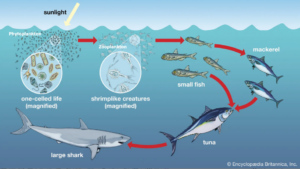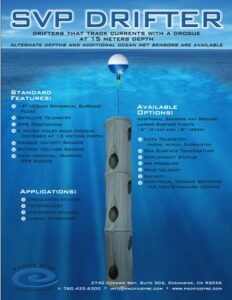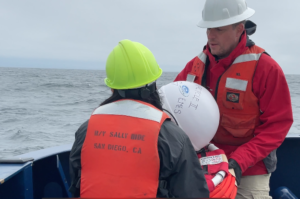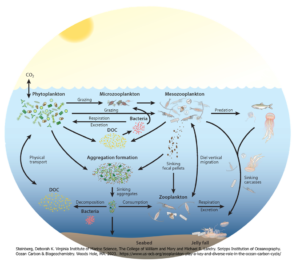Tuesday, May 30, 2023 – Offshore North Pacific Coast (Latitude: 43.01.281N, Longitude: 124.38.708W)
Tracking the Drifters of the Sea
Phytoplankton are primary producers for the aquatic food web as well as key producers for Earth’s atmosphere. Larger aquatic organisms rely on these microscopic producers for survival. (See Figure 9) The upwelling cycle observed during yesterday’s cast is yielding high productivity from large communities of phytoplankton.

This bloom of phytoplankton is being pushed southward along the coast of Oregon and California by a longshore current that is being driven by the atmospheric winds blowing from north to south along the North Pacific coast. (See Figure 4; Sunday May 28)

The scientists use a drifter buoy to assist them in following the upwelling cycle as it continues to be pushed along the coastal shelf. (See Figures 10,11) The buoy transmits GPS data to the ship for tracking and allows the researchers to continue sampling seawater from the upwelling cycle being investigated.

Scientists are observing the physiological responses of phytoplankton (including gene expression) and also monitoring population shifts within the communities as the abundance of nutrients declines during the upwelling cycle. The nutrients in the ocean are exchanged and produced through interactions between the ocean, air, and land and these interactions occur throughout the Biogeochemical Cycle. (See Figure 12) The image in Figure 12 illustrates the cycling that occurs among the microscopic organisms, like those illustrated in the pop-out bubbles shown in Figure 9 (above). Carbon, Nitrogen, and Sulfur are just a few of the chemicals found in the Biogeochemical Cycle. Several research teams are analyzing the changes in Nitrogen as the upwelling continues.

